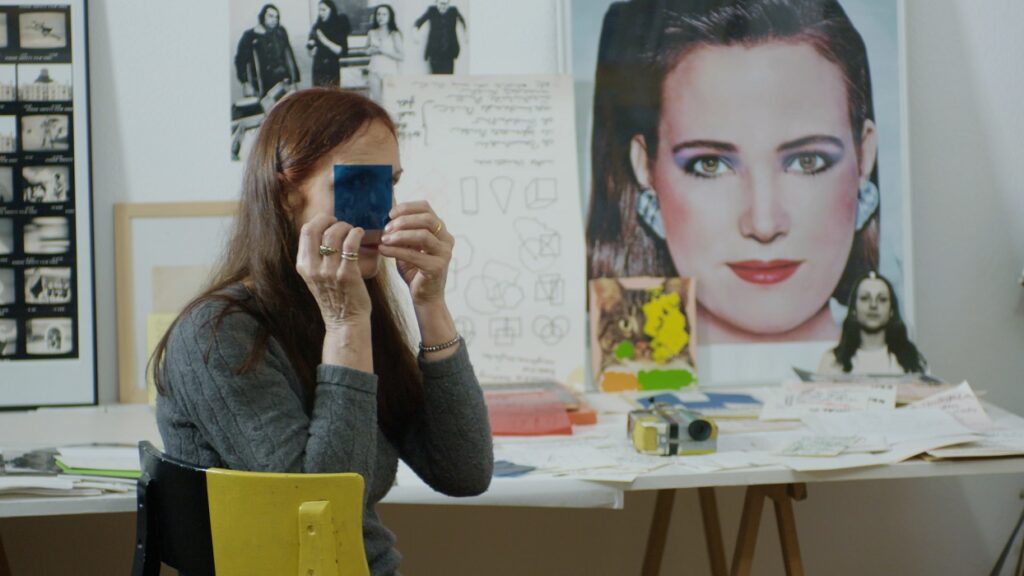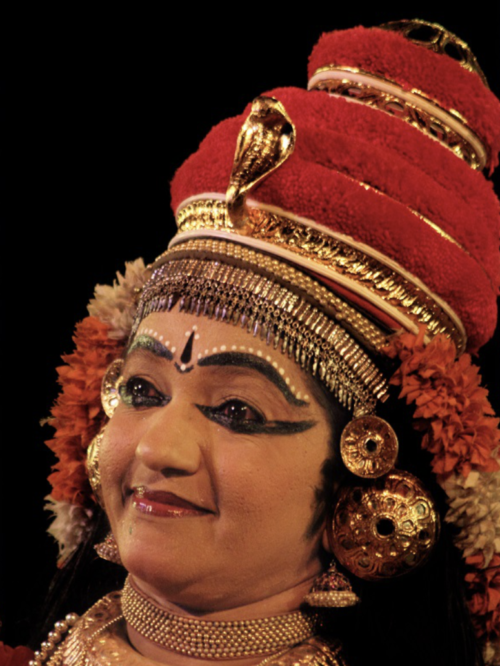Ageing and Dying in dance


Trixie is a documentary film about a seventy-nine year old dancer Beatrice Cordua written by Nicole Seiler and Bastien Genoux and directed by Bastien Genoux. It is a sensitive portrait of a woman who testifies about her experience as a dancer and choreographer.

One thing that I did not feel for the 79 year old dancer, Beatrice Cordua while watching Trixie is sympathy and neither does she for herself. She is not afraid of what her body can or cannot do, but rather rejoices in the impermanence of her biological body. Beatrice attended the Rudolf Steiner School in Hamburg and one of the reports that came from her school said she should learn the violin. As Beatrice’s mother was a ballet dancer, Beatrice had been interested in ballet as a child but she also wanted to play the violin. Her father decided that they should buy her a violin. So on a Saturday afternoon, she and her father went to the shop only to discover that it was shut. And that’s how and when her life as a dancer was decided.
There is an honesty about Beatrice that almost strikes you, first as a joke but later as her fearless sincerity. Beatrice does not tell us any grand narratives and perspectives of how she started dancing and why, but simply this incident of how a certain shopkeeper at a certain violin shop had decided to keep his shop shut on that particular Saturday afternoon that led Beatrice to choose dance for life. It is these realistic and humorous traits of Beatrice that makes her so relatable to the viewer while watching the film.
The film was screened at Attakkalari India Biennale 2021-22. During the post-screening conversation, one audience member said they really admired Beatrice for continuing to dance despite her age and the limitations to body that age can pose. They also shared how they broke down several times while watching the movie. I would like to offer some contestation here, not because I don’t think Beatrice is not courageous but because I don’t think ageing is a matter of courage. Everybody ages. We live in a world where time moves linear, and ageing is inevitable to each body in any profession.
Why are people so afraid of ageing? As biological beings, we always know what is coming towards us. And even though, it is common knowledge that body ages, we are still very afraid of it. Maybe, it’s not the biological process of ageing that we are afraid of. It’s what ageing is made to mean socially and culturally that we start to fear. To think of it, the day we are born is the day our body begins to ‘age’ and ‘grow’. But nobody seems to think that a one year old child is ageing into a fourteen year old, we see this phenomenon as growth and development. On the other hand, when individuals start approaching their 50s and 60s, we see that process as ageing. What I want to emphasise here is that both ‘growth and development’ and ‘ageing’ in any case are just social constructs.
Why are people so afraid of ageing? The image of an aged body is considered to be in conflict with the stereotypical standards of beauty, especially in regards to a female body. The word beautiful and the ‘full’ at the end of it, translates into ‘full of beauty’. What does it mean to be ‘full of beauty’? Beatrice recalls that recently she received a letter asking her, “Why do you still dance nude?” She laughs at the question but explains that it is important for the façade to fade away and “the desolation or beauty of the body to be visible”. It’s interesting how desolation and beauty can be heard as synonyms in that answer.
Unlike the audience member who broke down while watching the film, I kept smiling throughout the movie. Because I think what was beautiful was the manner in which Beatrice de-attaches herself from her objective body. She says with point-blank clarity, “It is an instrument” while not realizing the hundreds of illusions she shatters with such nonchalance. She talks about her body in third person and so objectively that you feel that she is almost trying to nullify it. But actually what she does is, she helps herself see her ageing body as just another phase of her dancing body.
Beatrice is far from hating her body. She understands very well that a human body paces, and fails, and that these failures of the body must be admitted to. Of course, it pains her but her body now is so much more a part of her than it ever was. To put it in her words, “My body is my soulmate”. As dancers, we often set out to achieve an idea of ‘a’ body that has been imposed on us via a commodified and classified world. Long lines, straight spines, flexible bodies, short hair, long hair, six packs, muscular quads, muscular calves, chiseled arms and many other adjectives are thrown at us every day inside and outside the studio. And foolishly, we bind ourselves to these adjectives; we set out to fulfill what people want to see. I am one of those foolish dancers and maybe the young Beatrice, also, must have been one of us at some point in her life. Sometimes, I wonder what it is that we are afraid of losing and if we are even losing anything or are they just imaginary losses and no one really cares.
Why are people so afraid of ageing? We are mortal beings with mortal needs, therefore maybe what we are afraid of is not ageing but the inevitable consequences of ageing- the most inevitable being the death. Not a mortal death, but death of our dreams and ideas. Maybe, we become aware of the impermanence of our accolades and achievements. Maybe, we are afraid of being not memorable enough as an artist. Maybe, we are afraid of having regrets or having none. For Beatrice, who was diagnosed with Parkinson’s, she is not afraid of death but of losing her memories. Forgetting the way to the green room or forgetting the route to her hotel room from the restaurant, forgetting her loved ones and their faces, the helplessness and the feeling of powerless is what she is afraid of.
Beatrice was married to late visual artist, Ludwig Schönherr. They had two simple rules, no furniture and no children. It seems like a trivial principle but it has an underlying philosophy of impermanence of this world and the bodies that live on it. In the film and in this essay, there is no attempt to romanticize Beatrice and her 79-year old body; on the contrary, the attempt is to normalize it. Ageing is an ordinary affair but it is also hard. But then, so is everything. Maybe we don’t ‘age’, maybe we just grow into different versions of ourselves as we progress through time. Maybe, it’s not the biological changes we are afraid of but of change in the image that we hold of our ‘self’.
As a dancer, Beatrice has worked with artists such as Pina Bausch, John Neumeier, Merce Cunningham, John Cage, Johann Kresnik and many others, and still performs and collaborates. As a choreographer, she has not had an overly celebrated career like the choreographers she has worked with. Beatrice is aware of these truths. But she is also aware that she is not the first 79 year old dancer and will not be the last. Somehow, she is able to see through the façade. Maybe, it’s her age that is source of such wisdom. Maybe, it’s because she was born in the 40s, and today, in 2022, it’s inevitable that we will see her as a pioneer of sorts. Maybe, it’s just pure luck and chance.
This collaboration between Nicole Seiler, Beatrice Cordua and Bastien Genoux started out like many collaborations do, by chance. Nicole Seiler, a swiss choreographer, had actually set out to make a stage performance on dance history with a female dancer, while emphasizing on the dancer’s individual journey and body. In the start, she wanted to work with a Swiss dancer as she was interested in the Swiss history. But on someone’s suggestion she decided to meet a German dancer Beatrice Cordua on skype. And within thirty seconds into the video call, Nicole had found her protagonist and I understand why.
In the future, as dancers will continue to watch Trixie, the film, Beatrice will continue to watch herself live and act out in her own project, her own life, with mindfulness and awareness that we all wish to have but are afraid to achieve. Maybe because we are afraid of what we would truly know of ourselves or would think of ourselves in this impermanent world. Just like Beatrice says, “You are afraid of yourself, not of the audience.”




